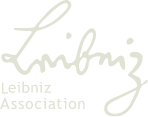The most urgent problems in the Haihe River Basin are an increasing shortage of water resources, low water quality and overexploitation of groundwater. The basin covers 318.000 km2 which is inhabited by 141 Mio people and produces 14% of the GDP. The average surface water availability is 251 m3/y/cap., comparable to the world driest regions. The South-to-North Water Diversion Project will cover only a small portion of the growing water demand. The WET System is designed as a client-server solution that can help water authorities such as the Haihe River Conservancy Commission to administer and coordinate river basin management. The system can help to reduce vulnerability of river basins to climate change and it supports implementation of management options improving the quantitative and qualitative status of water bodies. Questions are: Which global change scenarios should be analyzed? Which components have to be further developed? Is there a need and possibility of extending the regionally oriented WET research with local deepening studies for specific processes and technologies of sustainable land and water management? Who are the partners and how should tasks be distributed? German: Szenarienstudien zu den Folgen von Klimaextremen sind von grosser Bedeutung für die Verminderung der Vulnerabilität von Regionen. Für das Elbe- und Guanting-Einzugsgebiet wurden bzw. werden gegenwärtig Wasser-Expert Toolboxen (WET) erstellt, die für Szenarienanalysen von Güte- und Mengenparametern des Oberflächenwasserhaushalts genutzt werden können. Im Rahmen des Projektes sollen Anwendungsfälle für die WET im Hai-Flussgebiet identifiziert und ein Forschungsverbund geformt werden, der die WET für den ausgewählten Anwendungsfall weiterentwickelt, implementiert und die exemplarische Anwendung der WET für eine Szenarienstudie organisiert. Folgende Fragen sind u.a. zu klären: Welche Szenarien des globalen Wandels sind vor dem Hintergrund der mittel- und langfristigen Planungen der chinesischen Seite für das Hai-Einzugsgebiet und der gegebenen Empfindlichkeit gegenüber Klimawandel von besonderem Interesse? Welchen Bedarf für methodische Erweiterungen der Toolbox gibt es? Wo liegen besondere regionale Schwerpunkte innerhalb des Hai-Einzugsgebietes? Der Prozess wird im Rahmen von Workshops vorangetrieben und durch den Review der bisherigen und absehbaren Aktivitäten stimuliert.
The Project objectives include: - Intensification of cooperation between the German and Chinese Project partners established and consolidated in the BMBF Funded Project: - Sustainable Water and Agricultural Land Use in the Guanting Watershed under Limited Water Availability - (www.guanting.de), which started in 2009. - Recognition of the needs and demands of the Chinese experts and water administrators in the implementation of sustainable water management. - Exploring the scientific origin, potential benefits, costs and prerequisites associated with further development and extension of the Water Expert Toolbox (WET) System from the Guanting Watershed to the whole Haihe River Basin (the Guanting Watershed is a sub basin of the Haihe River). - Training of Chinese experts and students in the WET System and integrated water management. - Writing and submission of a joint Research and Development project proposal for a scenario study of global change impacts in the Haihe River Basin based on the WET System. - Recognizing potential and specific needs for Asian Development Bank follow-up projects in the Haihe River Basin.




